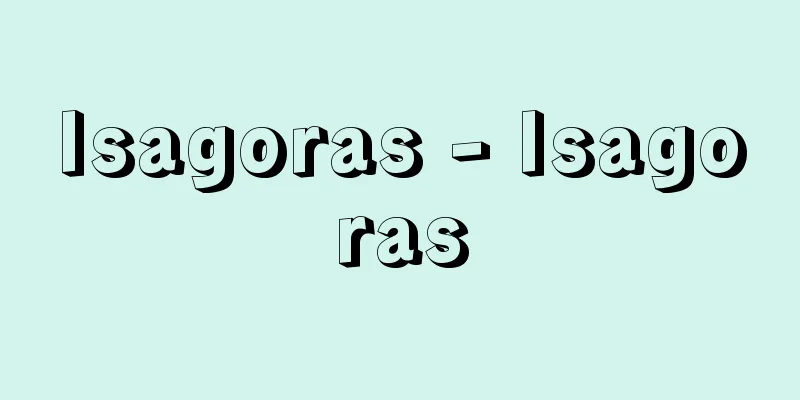Beirut - Beirut (English spelling)

|
The capital of Lebanon. A port city on the eastern Mediterranean coast in the west of the country. Population 1,937,000 (World Bank estimate as of 2010). Approximately 46% of the total population of Lebanon lives there. Since ancient times, fierce battles have been fought over this natural harbor. In ancient times, it prospered as a base for the Phoenicians, who engaged in maritime trade, and during the Roman Empire period it flourished as a seat of politics, commerce, and learning. It became part of the Islamic world in the early 7th century, came under the control of the Crusaders in the 12th century, and came under the control of the Ottoman Empire in the 16th century. As European countries began to advance into the area in the 19th century, it developed greatly as a port city. After World War I, it became the capital of Syria and Lebanon under the French mandate, and became the capital of Lebanon when it gained independence in 1943. Until the civil war began in 1975, it was a cosmopolitan city touted as the "Paris of the Middle East" as a major center of finance, commerce, information, tourism, and academia in the Middle East. In 1970, the Palestine Liberation Organization (PLO), which was expelled from Jordan, moved its headquarters to Beirut, and many Palestinians also flocked to the city. Conflict between Christians and Muslims, including Palestinians, intensified, and the city plunged into civil war. Christians are concentrated in East Beirut, including Maronites, Greek Orthodox, Armenian, and Catholics. West Beirut is a Muslim region with a large Sunni population, but the influx of Shiites from the south who fled Israeli air strikes has caused a rapid increase. There used to be a Jewish community, but many left Beirut during the civil war. The old city, where Muslims and Christians coexisted, was reduced to a mountain of rubble after 15 years of civil war, and invaded by immigrants, while Shiites from the south formed slums in the suburbs, and Palestinian refugee camps were also built. The Palestine Liberation Organization was expelled from Lebanon in 1982 after fierce bombing by the Israeli army, but the civil war with various factions continued until 1990. Rafiq al-Hariri (1944-2005), who became prime minister in 1992 after the civil war, originally made his fortune in the construction industry in Saudi Arabia. He organized a cabinet mainly composed of technocrats and embarked on full-scale postwar reconstruction, which led to a large inflow of funds from the Gulf countries. Luxury hotels were built in Beirut, and the development of complex districts combining government offices, residential areas, and office areas progressed rapidly, but as a result of investing large amounts of money in infrastructure development, public debt put pressure on the finances. The recovery slowed down from the late 1990s, and the gross domestic product (GDP) growth rate in 2001 was only 1%. Hariri, who served as prime minister until October 2004 and led the post-war reconstruction, was assassinated in Beirut in February 2005 after his retirement, and Beirut International Airport in the southern suburbs was renamed Rafik Hariri International Airport in his honor. The Syrian army, which constituted the core of the "Arab Peacekeeping Forces" stationed in Lebanon since 1976, agreed to a partial withdrawal in the Taif Agreement (National Reconciliation Charter) of 1989, and withdrew from Beirut and the surrounding areas in 2001 (the Syrian army withdrew from Lebanon in 2005). Amid growing concerns that the civil war in neighboring Syria would spread to Lebanon, a terrorist bomb attack occurred in Beirut in October 2012, killing eight people. [Ikuko Katsumata] [References] | | | | | |Source: Shogakukan Encyclopedia Nipponica About Encyclopedia Nipponica Information | Legend |
|
レバノンの首都。同国西部にある、東地中海沿岸の港湾都市。人口193万7000(2010年、世界銀行推定)。レバノンの総人口のおよそ46%にあたる人々が暮らす。 古来、この天然の良港を巡る激しい戦いが繰り広げられた。古代、海上交易に従事したフェニキア人の拠点として繁栄、ローマ帝国領時代は政治、商業、学問の府として栄えた。7世紀前半からイスラム圏に入り、12世紀には十字軍の支配下に、16世紀からはオスマン帝国の支配下に入った。19世紀にヨーロッパ諸国の進出が活発になると、港湾都市として大きな発展を遂げた。第一次世界大戦後フランスの委任統治下でシリア・レバノンの首都に、1943年のレバノン独立でその首都となった。 1975年に内戦が始まるまでは、中東の金融、商業、情報、観光、学問の一大中心として「中東のパリ」と謳(うた)われたコスモポリタンな都市だった。1970年にヨルダンを追放されたパレスチナ解放機構(PLO)がベイルートに本部を移し、多くのパレスチナ人も流入した。キリスト教徒と、パレスチナ人を含むイスラム教徒との対立が激しくなり、内戦に突入した。 東ベイルートにはキリスト教徒が集中し、マロン派、ギリシア正教派、アルメニア教会派、カトリックなどがいる。西ベイルートはイスラム教徒地域でスンニー派が多かったが、イスラエル軍の空爆から逃れてきた南部のシーア派が流入、急増した。かつてはユダヤ人コミュニティも存在したが、内戦で多くがベイルートを離れた。イスラム教徒、キリスト教徒の混在していた旧市街は15年に及ぶ内戦でがれきの山と化して流入民が住み着き、郊外には南部から入ってきたシーア派がスラムを形成し、パレスチナ人の難民キャンプもつくられた。1982年のイスラエル軍による猛爆撃でパレスチナ解放機構はレバノンを追放されたが、その後も諸派入り乱れての内戦が1990年まで続いた。 内戦終結後の1992年に首相の座についたラフィク・ハリーリRafiq al-Hariri(1944―2005)は、もともとサウジアラビアでの建築業で財を築いた人物。テクノクラート中心の内閣を組閣して本格的な戦後復興に乗り出し、湾岸諸国から多額の資金が流入した。ベイルートには高級ホテルが建ち並び、官庁、住宅、オフィス街を組み合わせた複合地区の整備が急速に進んだが、インフラ整備に多額の予算を投じた結果、公的債務が財政を圧迫した。1990年代末から回復基調は鈍化し、2001年の国内総生産(GDP)成長率は1%にとどまった。2004年10月まで首相を務めて内戦復興を率いたハリーリは、退任後の2005年2月にベイルート市内で暗殺され、南郊のベイルート国際空港は、彼にちなんでラフィク・ハリーリ国際空港と改称された。 1976年から駐留していた「アラブ平和維持軍」の主体をなすシリア軍は、1989年のタイフ合意(国民和解憲章)で部分撤退が合意され、2001年にベイルートとその周辺地域から撤退した(シリア軍は2005年にレバノンから撤退)。隣国シリアの内戦がレバノンにも飛び火する懸念が高まるなか、2012年10月、ベイルート市内で発生した爆弾テロにより8名が死亡した。 [勝又郁子] [参照項目] | | | | | |出典 小学館 日本大百科全書(ニッポニカ)日本大百科全書(ニッポニカ)について 情報 | 凡例 |
<<: Bingling Temple Grottoes - Bingling Temple Grottoes
Recommend
Koen - Koen
A Buddhist sculptor in the mid-Kamakura period. A...
Illustrations of plants - Soumokuzusetsu
Japan's first illustrated book on plants base...
Bishamonten
A Buddhist guardian deity. The Sanskrit word Vaiś...
Skating - Suketo (English spelling) ice skating
A sport in which skaters skate on ice wearing ska...
Weltefreden - Weltefreden
… After 1619, the excavation of canals, the const...
Cornet alacreme (English: Cornet alacreme)
...Add the flour and mix lightly, then transfer t...
Nuisance insect - fukaikonchu (English spelling)
This refers to insects that cause discomfort to hu...
Kawai Gyokudo - Kawai Gyokudo
Japanese painter. Born in Aichi Prefecture on Nov...
Pollen Fever
…He appeared on stage as a child actor, and began...
Nonomura Ninsei - Nonomura Ninsei
Dates of birth and death unknown. A master crafts...
Building Standards Act
This law aims to protect the lives, health, and p...
M.H.D.
《 magnetohydrodynamics 》⇒Magnetohydrodynamics Sour...
Aquincum (English spelling)
The capital of the ancient Roman province of Panno...
Physical geography - Shizenchirigaku (English spelling) physical geography
A branch of geography. Geography is divided into ...
Darjeeling - Darjeeling (English spelling)
A tourist and resort city in northeastern India, ...









